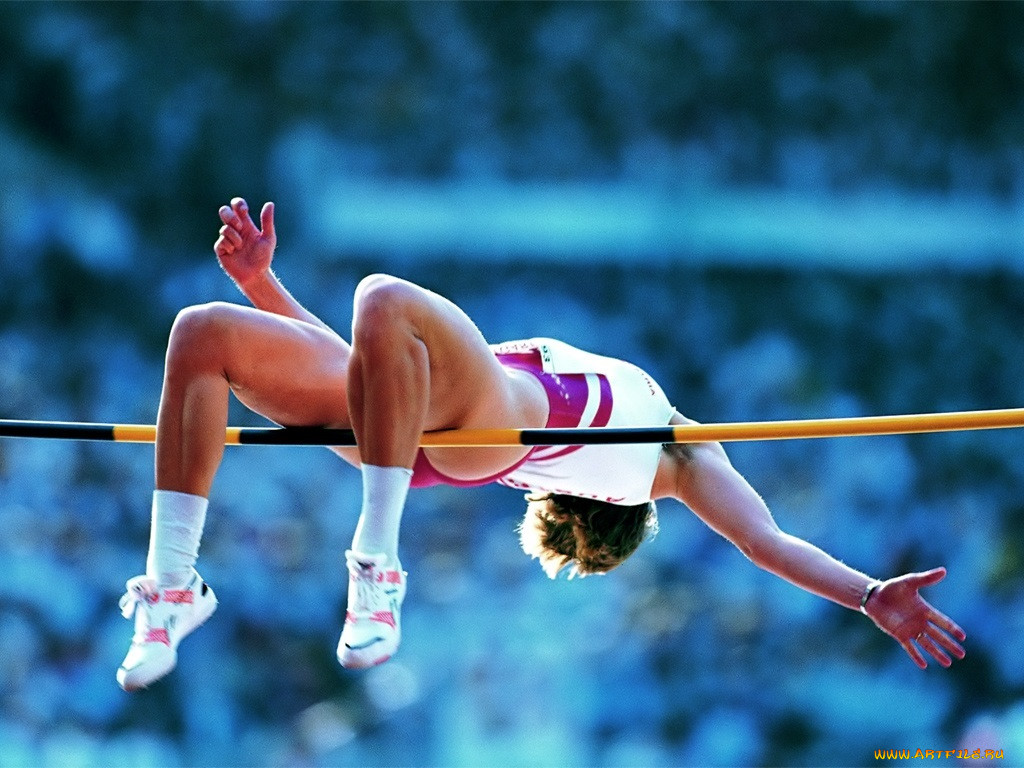Strength Training: Peak Strength
Phase 4 is my favorite phase of the Maximum Strength program, not only because it ends with Final Day – your chance to prove how great you have accomplished in just 16 weeks – but also because it emphasizes single repetition blocks with Using weights above 90% of your maximum repetition weight (1RM), the Holy Grail for developing maximum strength. This chapter provides all the information you need to achieve the best results by the day the program ends. All strength exercises are described and illustrated, and detailed workout schedules and recommendations for performing energy workouts are also provided. In the final section of the chapter, I will provide brief instructions for the End Day and leave space for you to record your results.
Phase 4: Strength Training
In this phase, there are a few more overlaps with the strength exercises of the previous phases, but there is still a lot of new here. Phase 4 has a total of 21 exercises. The amount of resistance / weight you use in each exercise depends on the number of repetitions per set that is recommended for the given session. As a general rule, use the highest resistance / weight level that you can perform the given number of repetitions with in the best possible way. This does not apply to exercises that use only body weight for resistance, such as reverse twisting. For more detailed instructions on how to do the exercises, see the Phase 4 Strength Training Schedule at the end of the chapter.

Anderson Front Squat with Restraints
EFFECT : This exercise is great for building speed strength – also known as strength development. It strengthens the quadriceps, glutes, posterior leg muscles, and some erectors of the spine.
START OF EXERCISE : Prepare in the same way as for standard front squats (see Phase 1 ), but with the restraints in the lower position of the power rack.
ACTION : Do this exercise in the same way as a standard front squat, only when reaching the bottom position, hold the bar on the restraints for one second, and then suddenly rise to the starting position.
Class traction “sumo”
EFFECT : This exercise strengthens the muscles of the glutes, the muscles of the back of the leg, the adductors (inner thigh), the quadriceps, the upper back, the grip and various erectors of the spine.
START EXERCISE : Place the weighted barbell on the floor. Spread your legs wide, your shins almost touching the bar; lower your buttocks to the floor and grab the bar with both hands shoulder-width apart or slightly narrower, using an overhead or mixed grip. The arms are fully extended, the chest is raised as high as possible in this position.
ACTION : Tighten all your back muscles and stand up straight. Lock in by moving your shoulder blades back. Keep in mind that you will have to experiment with the leg spacing in this exercise to find the position that is most comfortable; some people prefer a much wider leg position than others.
Cross Grip Barbell Reverse Lunge
EFFECT : This movement combines a front squat with a reverse lunge with a barbell, but it is more difficult than the latter, as resistance is provided by the barbell on the front bent arms. As you shift your center of balance upward, far beyond the base of support, the load on balance becomes much greater.
START OF EXERCISE : Prepare in the same way as for the front squat (see Phase 1).
ACTION : Step back with one leg and bend the knees of both legs until the knee of the back leg hits the floor. Most of your weight should be on the heel of your front foot. Push with this heel to use the muscles in the back of the leg and glute to return to the starting position. Try to minimize the take-off from your back foot. Complete the prescribed number of repetitions with the same leg, rest and then work with the other leg.
Bench press with close hands on an incline
EFFECT : This exercise mainly strengthens the chest, shoulders and biceps, although a tighter grip increases the load on the triceps, which is similar to a standard incline dumbbell press.
START OF EXERCISE : Prepare for the exercise in the same way as for the standard incline bench press (see Phase 2), but only spread your arms about 30-35 centimeters apart.
ACTION : Perform this exercise in the same way as a standard incline bar press.
Bench press with two boards
EFFECT : This is a partial amplitude bench press that improves your grip and helps you get used to lifting heavier weights. It also slightly reduces the strain on the shoulders.
START OF EXERCISE : For this exercise, you will need two 5x10cm pieces of wood glued together with duct tape, or a thick telephone directory. During exercise, place bars on your chest to reduce range of motion. It is best if your partner holds the boards, but you can also wrap some tape around your torso to keep the boards in place, or simply tuck them under your shirt.
ACTION : Perform this exercise in the same way as a regular bench press (see Phase 1), but with less range of motion provided by the boards.
Bench Press from a bench with a reverse incline with close hands
EFFECT : In general, the reverse incline bench press puts less stress on the shoulders than the flat bench press and incline bench press, so this is a very good position if you want to exercise with a lot of weight without straining. shoulders.
START OF EXERCISE : Prepare to begin the exercise in the same way as for the standard bench press (see Phase 1), but use a bench with a reverse incline. If you do not have a dedicated bench, simply lift one end of the bench and do the exercise using a power rack.
ACTION Perform this exercise in the same way as the standard bench press. The only difference is that you cannot use your legs from a reclined position.
Pull-ups with the grip palms down with support under the chest
EFFECT : This exercise strengthens some of the muscles in the upper back – the latissimus, upper / middle / lower trapezius and rhomboid muscles – as well as the flexor elbows (particularly the biceps) and the grip.
START OF EXERCISE : Begin in a prone position, face down on the T-bar machine, and grasp the handles with your palms facing down.
ACTION : Flatten your shoulder blades, bend your elbows, pull the arms towards your body. Try to keep your torso as straight as possible, your chest is pressed tightly against the support, the main load is on the upper back. Keep your chin straight and keep your shoulder blades in a flattened position for one count at the top of each rep.
Hammer Bend Dumbbell Exercise
EFFECT : This exercise strengthens the biceps of the arms, and in particular the two muscles of the biceps: the brachioradialis muscle and the brachialis muscle.
START OF EXERCISE : Stand straight, arms relaxed at your sides, each with dumbbells, palms facing each other.
ACTION : Tighten your biceps and bend your arms with weights towards your shoulders. Return to starting position.
Pedestal Squats See Phase 1. Natural Lift Using the Glutes and Hind Legs See Phase 2. Single Legged Pedestal Squats See Phase 2 (but try to get as low as possible this month!).

Dumbbell forward lunge
EFFECT : This exercise strengthens the muscles of the glutes, muscles of the back of the leg, quadriceps, grip and various spinal erectors.
START OF EXERCISE : Stand up straight, arms relaxed at your sides, each with dumbbells.
ACTION Take a wide step forward with one leg, keeping your torso upright. Use the heel of your front foot to slow down the descent. Bend both knees until the knee of the back leg hits the floor, and then push back from the heel of the front leg to return to the starting position. Continue lunges with the same leg until you complete the prescribed number of repetitions; then take a break and work on the other leg.
Barbell Rollout: Knees on a 10cm Pedestal
EFFECT : This exercise strengthens several major muscles in the trunk, mainly the rectus abdominis and the latissimus muscle.
STARTING THE EXERCISE : Prepare to begin the exercise in the same way as for a standard barbell rollout (see Phase 2), but place a 10cm tall bollard under your knees to increase your range of motion.
ACTION : Perform this exercise in the same way as a standard barbell rollout, but with your knees raised.
Speed Bench Press
See Phase 2.
Press from the floor with the hands close together
EFFECT : This exercise strengthens the chest, shoulders and triceps, with particular emphasis on the triceps due to its limited amplitude and narrow grip.
STARTING THE EXERCISE : Prepare to begin the exercise in the same way as for the standard floor press (see Phase 3), but move your arms only 30-35 centimeters apart on the barbell.
ACTION : Perform this exercise in the same way as a standard floor press, but with a narrower grip.
Neutral grip pull-ups
EFFECT : This exercise strengthens the lats, the elbow flexors (including the biceps) and the grip, plus some of the major muscles in the trunk.
STARTING THE EXERCISE : Prepare to begin the exercise in the same way as the chin-up with arms extended (see Phase 2), but with the palms facing each other.
ACTION : Perform this exercise in the same way as the chin-up with the arms extended, but with a neutral grip.
Close-arm push-ups
EFFECT : This push-up variation is another way to stimulate the ability of the triceps to support working muscles, and strong triceps are essential for a good bench press! If the standard version of this exercise is too easy, you can always pull an elastic band around your shoulders (as you did in Phase 2) to increase the difficulty.
START OF EXERCISE : Prepare to start the exercise in the same way as for standard push-ups (see Phase T), but with your arms only 10-13cm apart.
ACTION : Perform this exercise in the same way as for standard push-ups, but keep your elbows closer to your sides as you move.
Phase 4: Strength Training Schedule
See the previous page for your four week strength training schedule for Phase 4. Remember to start each session with one of two warm-ups . For each exercise involving external weights / resistance, use the highest weight / resistance you can handle to perform the prescribed number of reps in the best possible shape.
For exercises that do not require external resistance (push-ups with close arms), simply do the specified number of repetitions. Rest between blocks of exercises as much as necessary to complete the next block at the same performance level, but no longer. When you see the symbols “A1” and “A2” or “B1” and “B2”, etc., you should alternate the two exercises. This phase includes the Reporting Day – a five-exercise strength test at the end of the program.

Phase 4 Energy Training Tips
The following are guidelines for energy training in Phase 4. Separate guidelines are provided for each of the three body types mentioned in Chapter 3.
Asthenic body type
Tuesdays and Thursdays . Technical workout 30% to a maximum of 1 rep, followed by 20 minutes of low-intensity cardio (at 60-70% of your maximum heart rate).
Athletic body type
IMMEDIATELY AFTER EACH POWER TRAINING . Ten minutes of low-intensity cardio (bike, treadmill, etc., at 60-70% of your maximum heart rate).
TUESDAY . Twenty minutes (excluding warm up and rest) of high intensity interval training with a 30 second work / 60 second rest cycle on an elliptical trainer, bicycle, rowing machine, or treadmill.
THURSDAY . Technical workout 30% to a maximum of 1 rep, followed by 20 minutes of low intensity cardio (at 60-70% of your maximum heart rate).
Picnic body type
IMMEDIATELY AFTER EACH POWER TRAINING . Ten minutes of low-intensity cardio (at 60-70% of your maximum heart rate).
SATURDAY . Replace your low intensity cardio load after lifting the weights for 10 minutes of high intensity interval training with a 30 second work / 60 second rest cycle on an elliptical trainer, bicycle, rowing machine, or treadmill.
TUESDAY . Twenty minutes (excluding warm up and rest) of high intensity interval training with a 30 second work / 60 second rest cycle on an elliptical trainer, bicycle, rowing machine, or treadmill. THURSDAY . Technical workout 30% to a maximum of 1 rep, followed by 20 minutes of low-intensity cardio (at 60-70% of your maximum heart rate).
PHASE 4: STRENGTH TRAINING SCHEDULE
| week 13
tall |
week 14
middle |
week 15
very tall |
week 16
low |
week 13
tall |
week 14
middle |
week 15
very tall |
week 16
low |
||
| Sunday : rest or vigorous workout | Thursday : rest or vigorous workout | ||||||||
| Monday : lower body | Friday : lower body | ||||||||
| A1 Anderson Front Squat with Restraints (Weeks 13, 14); Deadlift “sumo”
(Week 15) |
7 singles | 5 singles | 9 singles | pass | A. Pedestal squats | 10X2 at 50% 1PM | 8X2 at 55% 1RM, then 2×2 heavy | 12X2 at 60% 1PM | skip classes in the 16th week |
| B. High-speed deadlift | 8X1 at 60% 1PM | 8×1 at 65% 1PM | 10X1 at 70% 1PM | pass | B. Natural lift using the gluteal and posterior leg muscles | 4X5 | 3X5 | 4X5 | |
| C Cross Grip Barbell Reverse Lunge | 4×8/
side |
3X8/
side |
4X8/
side |
2×8/
side (light) |
C. Dumbbell forward lunge | 3X6/
side |
3×5/
side |
4X6/
side |
|
| D. Paloff Press | 3×8/
side |
3X8/
side |
3×8/
side |
3X8/
side |
D1 Squat on one leg (pistol)
on the pedestal |
3×10 | 3X10 | 3X10 | |
| Tuesday : rest or vigorous workout | D2 Barbell Rollout: Knees on 10cm Stand | 3X12 | 3×12 | 3×12 | |||||
| Saturday : upper body | |||||||||
| A1 Bench Press with hands close together on an incline (Weeks 13, 14); Double Board Press (Weeks 15, 16) | 7 singles | 5 singles | 9 singles | pass• | |||||
| Saturday: upper body | |||||||||
| A. Speed Bench Press | 10X3 at 50% 1PM | 8X3 at 55% 1 PM, then 2×2 | 10×3 at 60% 1PM | •• Long jump test | |||||
| B1 Reverse Incline Bench Press | 4×8 | 3X8 | 4X8 | 2×8 | B1 Close-Arms Floor Press | 4X5
2×7 |
heavy
3X5 1X7 |
4X5
2X7 |
1RM Squat Test |
| B2.Pulling the grip with the palms down with support
under the breast |
4X8 | 3×8 | 4×8 | 2X8 | B2. Neutral grip pull-ups | 4X5 | 3X5 | 4×5 | 1PM Press bench press |
| C1 Sliding shoulder blades on the wall | 3X12 | 3X12 | 3X12 | 3X12 | С1.Махи
with one dumbbell |
3×10 | 2X10 | 3X10 | 1PM Test for deadlift |
| C2.Dumbbell Hammer Exercise | 3×12 | 3X12 | 3X12 | 3×12 | C2. Push-ups with close hands | 3X10 | 2X10 | 3X10 | ZPM Pull-up test |
| • During week 16, complete this section on Tuesday. | |||||||||
| Hint: 7 singles> 50% = Seven blocks of one repetition. You don’t have to “count” the block until you feel that it is heavier than 90% of the weight that you can hardly lift in one set.
4×8 = Four blocks of eight reps. |
•• REPORTING DAY! Execute this section on the last Saturday of week 16. | ||||||||
Reporting day
All you need to do on the Reference Day is to repeat the pre-test sequence in Phase 1. Start weighing in as soon as you get out of bed. On your way to the gym, do a full mobility warm-up and then do all five functional tests, including specific movement warm-ups. Record your results in the table on the next page to the right of your pretest results. If possible, try to take the “after” photo later in the day.

